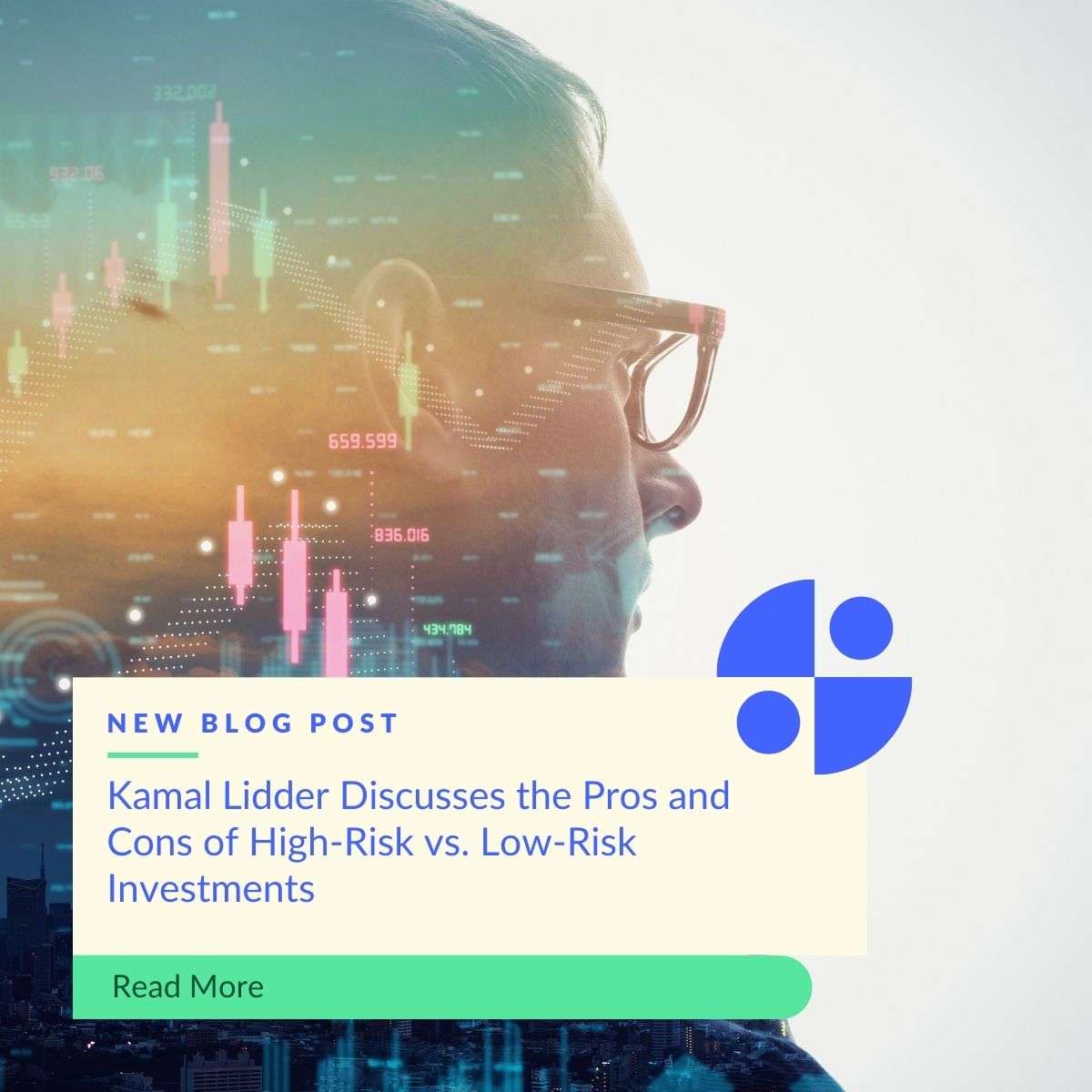Kamal Lidder Discusses the Pros and Cons of High-Risk vs. Low-Risk Investments
When it comes to investing, understanding the balance between risk and reward is crucial. Kamal Lidder, a seasoned wealth advisor with over 18+ years of experience, regularly emphasizes this balance to his clients. In the world of finance, investments generally fall into two broad categories: high-risk and low-risk. Each type has its own advantages and disadvantages, and the right choice depends on an investor's goals, risk tolerance, and time horizon. Let's dive into Kamal's insights on the pros and cons of both high-risk and low-risk investments.
The Appeal of High-Risk Investments
High-risk investments often attract those looking for significant returns in a shorter amount of time. These investments include assets like stocks in emerging markets, cryptocurrencies, and certain speculative stocks. Kamal explains that the primary appeal of high-risk investments is the potential for high returns. If timed well, an investor can see substantial growth in their portfolio.
However, Kamal is quick to point out the downside: volatility. High-risk investments can fluctuate wildly in value, and while this volatility can lead to significant gains, it can also result in substantial losses. Kamal often reminds his clients that with high risk comes the possibility of losing a large portion—or even all—of the invested capital.
Another challenge with high-risk investments is the emotional toll they can take. The constant ups and downs of the market can be stressful, particularly for those who are not seasoned investors. Kamal advises that if you're considering high-risk investments, you should be prepared for the emotional rollercoaster and ensure that these investments align with your overall financial plan.
The Stability of Low-Risk Investments
On the other end of the spectrum are low-risk investments. These include bonds, savings accounts, and dividend-paying stocks from well-established companies. Kamal highlights that the biggest advantage of low-risk investments is their stability. These assets tend to provide steady, albeit modest, returns over time. For those nearing retirement or seeking to preserve their wealth, low-risk investments offer a way to grow capital without exposing it to the same level of risk found in higher-risk options.
However, the lower risk comes with a trade-off: lower returns. Kamal explains that while low-risk investments can help protect your money, they might not offer the growth needed to outpace inflation over the long term. This means that while your capital is safe, its purchasing power may diminish over time.
Low-risk investments are also less exciting for those looking to see substantial growth in their portfolio. Kamal notes that for younger investors with a longer time horizon, a portfolio heavily weighted towards low-risk investments might not provide the growth needed to meet long-term financial goals.
Finding the Right Balance
Kamal stresses that the key to successful investing is finding the right balance between high-risk and low-risk investments. He often suggests a diversified portfolio that includes a mix of both, tailored to the investor's specific financial goals, risk tolerance, and time horizon. For instance, younger investors might lean more towards high-risk investments to take advantage of their longer time frame, while those closer to retirement might prioritize low-risk investments to preserve capital.
In conclusion
Kamal Lidder believes that understanding the pros and cons of both high-risk and low-risk investments is essential for making informed financial decisions. By carefully considering your individual circumstances and working with a knowledgeable advisor, you can create an investment strategy that balances risk and reward, helping you achieve your financial goals.
#investmentstrategy
#riskvsreward
#financialadvice
#wealthmanagement
#highrisklowrisk
#kamallidder
Visit:- https://www.behance.net/kamallidder






